
Danger level
Avalanche Problem
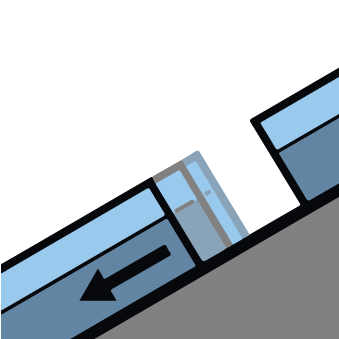 | | Gliding snow |
|  | |  |
 | | Wind-drifted snow |
| 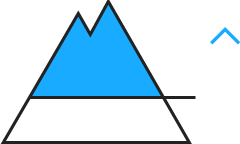 | |  |

Fresh wind slabs are to be evaluated with care and prudence. On steep grassy slopes natural avalanches must be expected in isolated cases.
On steep grassy slopes gliding avalanches are possible, even medium-sized ones, especially on steep sunny slopes above the tree line. Areas with glide cracks are to be avoided.
The new snow and wind slabs of the last few days can be released by a single winter sport participant in particular on very steep west, north and east facing slopes above the tree line. The number and size of avalanche prone locations will increase with altitude.
Avalanches can be triggered in deep layers of the snowpack and reach large size in isolated cases, especially in case of releases originating from very steep starting zones at high altitudes and in high Alpine regions that have retained the snow thus far. This applies in particular in case of a large load.
The current avalanche situation calls for extensive experience in the assessment of avalanche danger and careful route selection.
Snowpack
dp.2: gliding snow
dp.6: cold, loose snow and wind
100 to 200 cm of snow, and even more in some localities, has fallen since Friday. In some cases the various wind slabs have bonded poorly together. This applies at high altitudes and in high Alpine regions. The new snow of the day before yesterday is loosely bonded. The more recent wind slabs are covered with new snow and therefore difficult to recognise. Faceted weak layers exist deep in the old snowpack in particular at high altitudes and in high Alpine regions. Towards its base, the snowpack is moist, in particular at low and intermediate altitudes.
Tendency
The weather conditions will bring about a gradual change towards better conditions. Caution is to be exercised in areas with glide cracks.

Danger level
 | 2500m
|
Avalanche Problem
 | | Gliding snow |
| 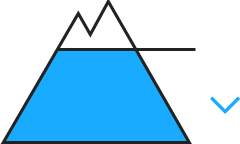 | |  |
 | | Wind-drifted snow |
|  | |  |

On steep grassy slopes natural avalanches must be expected. Fresh wind slabs require caution.
On steep grassy slopes gliding avalanches are possible at any time, even very large ones in isolated cases. This applies in particular on steep sunny slopes below approximately 2500 m. Exposed parts of transportation routes can be endangered. Areas with glide cracks are to be avoided.
The new snow and wind slabs of the last few days can be released by a single winter sport participant in particular on very steep west, north and east facing slopes above the tree line. The number and size of avalanche prone locations will increase with altitude.
In very isolated cases avalanches can be triggered in deep layers of the snowpack and reach very large size. This applies in case of releases originating from very steep starting zones at high altitudes and in high Alpine regions that have retained the snow thus far, especially at transitions from a shallow to a deep snowpack, this applies in particular in case of a large load.
The current avalanche situation calls for experience in the assessment of avalanche danger.
Snowpack
dp.2: gliding snow
dp.6: cold, loose snow and wind
100 to 200 cm of snow, and even more in some localities, has fallen since Friday. In some cases the various wind slabs have bonded poorly together. This applies at high altitudes and in high Alpine regions. The new snow of the day before yesterday is loosely bonded. The more recent wind slabs are covered with new snow and therefore difficult to recognise. Faceted weak layers exist deep in the old snowpack in particular at high altitudes and in high Alpine regions. Towards its base, the snowpack is moist, in particular at low and intermediate altitudes.
Tendency
The weather effects will bring about a gradual change towards better conditions. Caution is to be exercised in areas with glide cracks.

Danger level
 | 2500m
|
Avalanche Problem
 | | Gliding snow |
|  | |  |
 | | Wind-drifted snow |
|  | |  |

On steep grassy slopes natural avalanches must be expected. Fresh wind slabs at high altitude.
On steep grassy slopes gliding avalanches are possible at any time, even very large ones in isolated cases. This applies in particular on steep sunny slopes below approximately 2500 m. Exposed parts of transportation routes can be endangered.
In addition a certain danger of dry loose snow avalanches exists. This applies in extremely steep terrain also below the tree line.
The new snow and wind slabs of the last few days can be released by a single winter sport participant in particular on very steep west, north and east facing slopes above the tree line. The number and size of avalanche prone locations will increase with altitude.
The current avalanche situation calls for experience in the assessment of avalanche danger.
Snowpack
dp.2: gliding snow
dp.6: cold, loose snow and wind
Over a wide area 100 to 250 cm of snow, and even more in some localities, has fallen since Friday. In some cases the various wind slabs have bonded poorly together. This applies at high altitudes and in high Alpine regions. The new snow of the day before yesterday is loosely bonded. The more recent wind slabs are covered with new snow in some cases and therefore difficult to recognise. Towards its base, the snowpack is moist, in particular at low and intermediate altitudes.
Tendency
The weather effects will bring about a gradual change towards better conditions. Caution is to be exercised in areas with glide cracks.
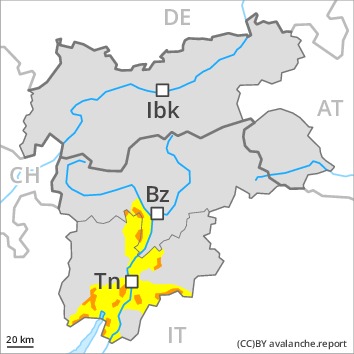
Danger level
 | treeline
|
Avalanche Problem
 | | Wind-drifted snow |
|  | |  |
 | | Gliding snow |
|  | |  |

Fresh wind slabs require caution. More gliding avalanches are possible.
The fresh wind slabs are to be evaluated with care and prudence in particular on west to north to east facing aspects above the tree line. The number and size of avalanche prone locations will increase with altitude.
On steep grassy slopes gliding avalanches are possible at any time, even medium-sized ones. This applies in all aspects below approximately 2500 m.
Ski touring calls for experience in the assessment of avalanche danger and careful route selection.
Snowpack
dp.2: gliding snow
dp.6: cold, loose snow and wind
Over a wide area over a wide area 100 to 150 cm of snow has fallen since Friday. The new snow of the day before yesterday is loosely bonded. In some cases the various wind slabs have bonded still only poorly together. These are covered with new snow and therefore difficult to recognise. Towards its base, the snowpack is moist, in particular at low and intermediate altitudes.
Tendency
The avalanche danger will persist.

Danger level
 | treeline
|
Avalanche Problem
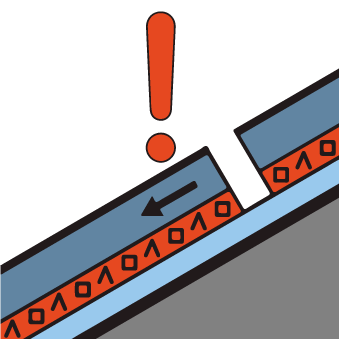 | | Persistent weak layer |
|  | |  |
 | | Wind-drifted snow |
|  | |  |

Wind slabs and weakly bonded old snow represent the main danger.
Weak layers in the old snowpack can be released by individual winter sport participants, caution is to be exercised in particular on steep shady slopes above the tree line, as well as on steep sunny slopes above approximately 2500 m. In isolated cases avalanches are large.
In addition the fresh wind slabs should be taken into account, in particular adjacent to ridgelines and in gullies and bowls above the tree line. The number and size of avalanche prone locations will increase with altitude. The fresh wind slabs are covered with new snow in some cases and therefore difficult to recognise.
On steep grassy slopes gliding avalanches are possible, in particular medium-sized ones, especially on very steep sunny slopes below approximately 2500 m.
The current avalanche situation calls for experience in the assessment of avalanche danger and careful route selection.
Snowpack
dp.1: deep persistent weak layer
dp.6: cold, loose snow and wind
In the last few days avalanche prone wind slabs formed above the tree line. The new snow of the day before yesterday is loosely bonded.
The old snowpack will be weakly bonded in some places. Whumpfing sounds and the formation of shooting cracks when stepping on the snowpack can indicate the danger.
Tendency
The avalanche danger will persist.
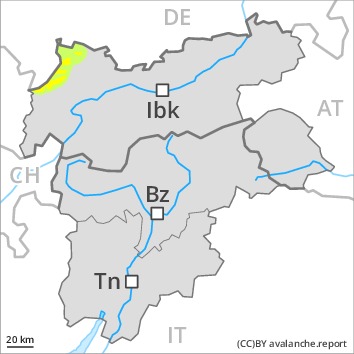
Danger level
 | 2000m
|
Avalanche Problem

Fresh wind slabs require caution.
The fresh and older wind slabs represent the main danger. They can be released by a single winter sport participant in some cases in particular on northwest to north to northeast facing aspects at high altitude. They are mostly small. They are covered with new snow in some cases and therefore difficult to recognise.
Snowpack
dp.6: cold, loose snow and wind
In the last few days sometimes avalanche prone wind slabs formed at high altitude. The old snowpack is weak in some cases, especially on steep shady slopes at high altitude. At low and intermediate altitudes hardly any snow is lying.
Tendency
The avalanche danger will persist.

Danger level
 | 2000m
|
Avalanche Problem

Fresh wind slabs require caution.
The fresh and older wind slabs represent the main danger. They can be released by a single winter sport participant in some cases in particular on northwest to north to northeast facing aspects at high altitude. They are mostly small. They are covered with new snow in some cases and therefore difficult to recognise.
Snowpack
dp.6: cold, loose snow and wind
In the last few days sometimes avalanche prone wind slabs formed at high altitude. The old snowpack is weak in some cases, especially on steep shady slopes at high altitude. At low and intermediate altitudes hardly any snow is lying.
Tendency
The avalanche danger will persist.

Danger level
 | 2000m
|
Avalanche Problem

Fresh wind slabs require caution.
The fresh and older wind slabs represent the main danger. They can be released by a single winter sport participant in some cases in particular on northwest to north to northeast facing aspects at high altitude. They are mostly small.
Snowpack
dp.6: cold, loose snow and wind
In the last few days sometimes avalanche prone wind slabs formed at high altitude, especially on steep shady slopes at high altitude. At low and intermediate altitudes hardly any snow is lying.
Tendency
Low, level 1.






















